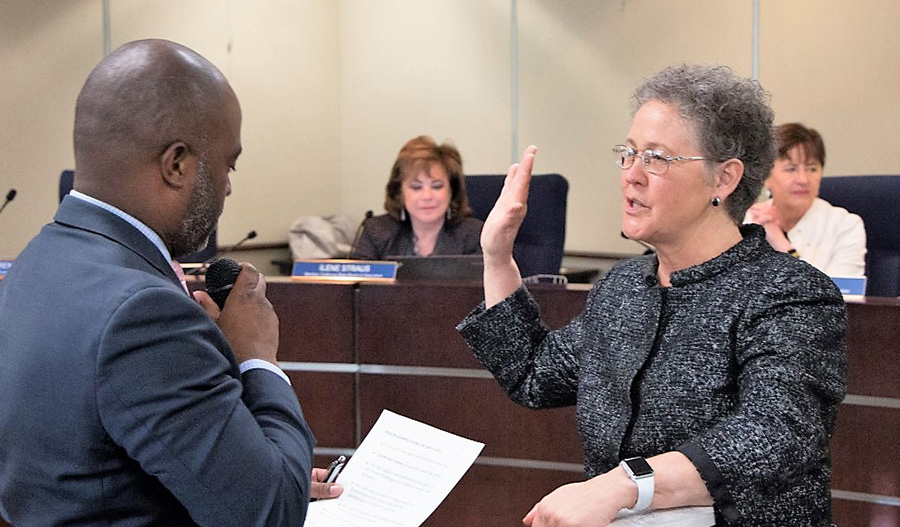Despite the California State Board of Education’s recent focus on System of Support implementation, some State Board members have voiced concerns about whether the new approach is reaching all districts and schools with demonstrated need. The system aims to assist local educational agencies and schools by promoting partnerships, building capacity and focusing on continuous improvement rather than turning to punishment and mandates.
Officials from the California Department of Education, California Collaborative for Educational Excellence and lead agencies have likewise understood that the new system needs exploration and explanation by way of workshops, trainings, webinars and other events.
To that end, the State Board’s March 13-14 meeting featured a presentation from the San Diego County Office of Education about how it is working with districts through the System of Support. Alongside Riverside, the San Diego COE is a geographic lead agency for its region charged with building the capacity of other county offices to aid districts.
With 22 districts in San Diego identified for Differentiated Assistance, Assistant Superintendent Jeanette Rodriguez-Chien said the goal has been to partner alongside districts, get more “boots on the ground” and engage in conversations about local needs and solutions.
“It’s one thing for districts to admire the problem, and it’s another thing for them to take root and to take action,” she said.
One of the challenges is providing scalable assistance and strategies that also recognize and respect the district’s unique culture and needs, Rodriguez-Chien said. Additionally, the end goal of the System of Support is to build capacity at the district level, rather than for it to receive outside aid time and time again.

During discussion about English learners and Title III programs in San Diego County, board member Sue Burr said it is very clear how important data collection and analysis is for districts looking to identify struggling student groups and root causes.
Unfortunately, Rodriguez-Chien said, many small or rural districts don’t have the staff or infrastructure to collect and effectively analyze data. “Most districts are really struggling to look at data,” she said. Realizing there is a major need to build out resources in the data realm, Rodriguez-Chien said the county office hosts a one-day institute at which attendees can dive deeply into both systemwide and student data.
After the San Diego COE presentation, board members Feliza Ortiz-Licon and Patricia Rucker said they are still worried that schools and districts may not be receiving the help they need or lack the capacity to address issues on their own.
Rucker said the board has heard a lot about the CCEE, lead agencies and county offices working together, but hopes districts are not being left out of the picture. In connection, Ortiz-Licon said that if districts are supposed to be the major agents of change through the state’s accountability system, they need to be better equipped and prepared to guide schools.
A second all-leads meeting is planned for April 9, which will allow for further discussion about methods to implement the State System of Support, CDE and CCEE staff said.
- The board approved allocating 337 grants totaling $150 million in the latest round of funding through the Career Technical Education Incentive Grant. The full list of awardees is available through the agenda item attachments on the State Board of Education website. The grant program began in 2015 as a way to deliver high-quality career technical education programs at the K-12 level.
- Staff announced that California Assessment of Student Performance and Progress score reports for 2018-19 will be delivered electronically through the local educational agency’s parent portal. The digital reports will be available in five languages, with more translations planned. The department said it will provide support to districts or county offices that still need printed student score reports because of technological constraints. As part of a 2019-20 redesign for CAASPP and English Language Proficiency Assessment for California websites and student score reports, the CDE said it also plans to introduce personalized videos for parents and guardians showing their student’s results.
- Board members tabled a vote on the implementation of the California Computer Science Strategic Implementation Plan. Though keen on promoting access to computer science, particularly for women and students of color, members expressed serious concerns that the plan would read more as an expensive mandate to local educational agencies. Intended as an advisory and summary of best practices, members advised CDE staff to revise and soften the plan’s language to make it clear to LEAs that its recommendations are voluntary and can vary in implementation. “I just worry an awful lot about the signal that we send,” Burr said.
- State Superintendent of Public Instruction Tony Thurmond swore in Linda Darling-Hammond as the board’s newest member before day two of the meeting. Board members then elected Darling-Hammond as board president. Thurmond said he looks forward to her leadership as the state builds on gains from recent reforms and addresses big problems yet to be solved, namely opportunity and achievement gaps. Ilene Straus was re-elected vice president.